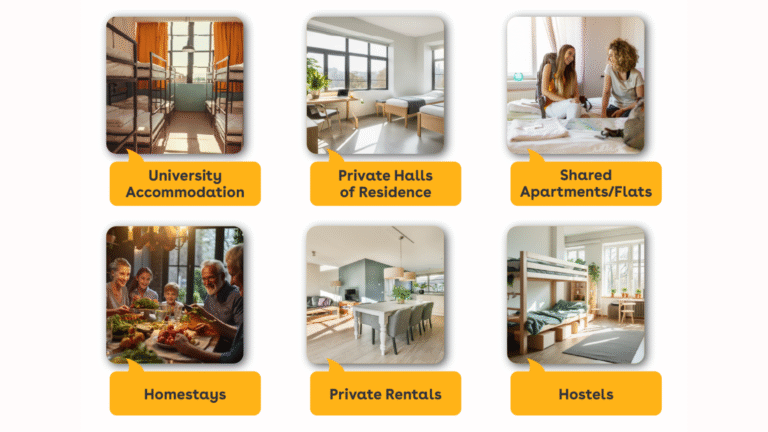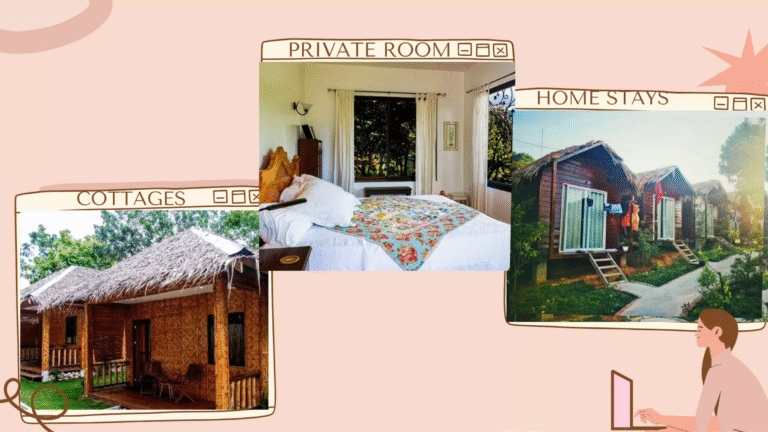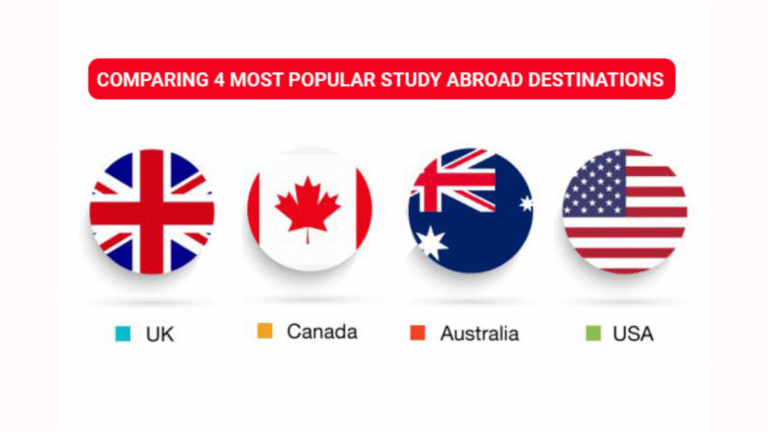Explore our detailed guides on student life abroad and find trusted housing platforms for affordable flats today!
Study Abroad Consultants In Delhi
- support@teachwell.co.in
- +91 93103 80899
- support@teachwell.co.in
- +91 93103 80899

Menu
Dorms, Flats, or Homestays: Which Is the Best Accommodation Option for Abroad Students?
When students first embark on their international education journey, one of the biggest, most practical questions they have to consider is where they’re going to stay. The accommodation option they decide on – whether it’s a dormitory, private apartment, or a homestay – is something that will influence their entire life abroad and every aspect of their experience. Accommodation affects comfort, finances, social life, and even academics.
As of this writing in 2026, things have changed a lot for students who need accommodation while studying abroad. Universities are investing in modern on-campus accommodation, private rental markets continue to expand across the globe, and online portals for renting internationally are making it easy for students to rent in other countries.In particular, flats are a fashionable, popular and flexible option for students who want independence and some degree of control over where and how they live.
In contrast, dorms and homestays remain popular with students who care about community or cultural exposure. The variations each option offers can make choosing which accommodation to select difficult to know and establish.Before you make a decision, it helps to know more about what happens in the style of accommodation you’ll be choosing. There are pros and cons to each option as well as personalities and finances for each student to determine how each option would or would not work for them.

Understanding the Three Major Accommodation Options
1. Dormitories (On-Campus Housing)
Dorms, also known as residence halls, are student housing facilities that are owned and operated by the university. They usually reside on or close to the campus to allow you to get to class, the library, and student services easily.
Dorms are great for first-year students. They provide a supportive structure and convenience, as well as opportunities for community building. Most universities, in the United Kingdom, Canada and Australia for example, provide fully furnished dorm living spaces, and share dining halls or meal plans. Having dormitory living, the student group has opportunities to interact with other first-year students from diverse backgrounds – students have opportunities to make friends early and adjust to university life.
Nonetheless, there can be drawbacks to living in a dorm. The rules can be rigorous, privacy is limited, and an occasional social noise can often disrupt study time. For a student that prefers their private space, or a more peaceful environment, dorm living, even after the first year can grow to feel a bit restrictive.
2. Flats (Private Apartments)
Flats are independently rented living arrangements, typically off-campus, that can be as simple as a single-studio flat, or involve a shared unit with multiple bedrooms. In cities like Melbourne, Toronto, and London flats have become more popular with second-year and postgraduate students who want to experience living independently, away from the institutional lifestyle of a residence hall.
The top reason students rent flats is for the freedom that comes with renting a flat. When you rent a flat, you set your own schedule, prepare your own meals, and decorate your dorm to suit your personal lifestyle. You are not subject to a curfew, a resident advisor, or a shared bathroom with an entire floor. The compliment of independence is definitely attractive when students want to feel like they are living like a local, and not just visitors.
However, renting a flat also involves more responsibilities than living in a campus residence hall. You will have to handle your own utility bills, housekeeping, and engage a landlord or overall property owner about anything other than rent. Despite the responsibilities of renting a flat, many students believe the opportunity for continuous independent lifestyle is an invaluable life experience to learn and exercise independence like they will after graduation. Lorem ipsum dolor sit amet, consectetur adipiscing elit. Ut elit tellus, luctus nec ullamcorper mattis, pulvinar dapibus leo.
3. Homestays (Living with a Host Family)
Homestays are another worthwhile option, especially for students to young to study abroad, or for students studying abroad in a country where English is not the dominant language. While staying at homestays, you stay in the home of a native family, often in your own room.
Homestays offer a type of cultural immersion that is difficult to find in a regular dorm or flat. You will participate in local traditions, sample local dishes, and have the comforts of home from the family daily. For Indian students heading abroad for the first time, a homestay can help with the transition and help assuage loneliness.
That said, you do get a little less independence with a homestay, as you will have to abide by the household rules. You can also expect to have a more limited social life than when you are in a shared flat or dorm. However, for students where cultural immersion and emotional support are priorities, homestays are a great option!
Why Flats Are Becoming the Preferred Option for Modern Students
Flats have been the best option for international students over the past couple of years. Education hubs like Melbourne, London, and Toronto, and many others worldwide, have neighborhoods built around student apartments.
The shift is primarily due to lifestyle shifts and preferences. Today’s students value flexibility. They want to be able to cook, entertain their friends, and have authority over their living space. Flats can meet these needs with relative ease. Many students also prefer the privacy that flats have to offer. After all, it is a juggling act of work and study. Additionally, it is simply a preference most students have.
More importantly, renting flats is now safer and easier because of services such as UniLodgers, AmberStudent, and HousingAnywhere. Students can access apartment rentals easily, and even speak to landlords before leaving home.
Another element driving the change is location. Flats typically provide students with accommodations close to the city center rather than on campus. Students can access campus in addition to the public transportation, restaurants, and part-time job options nearby. Flats are particularly good for students who desire to explore city life.

Dorms: The Ideal Start for First-Year Students
Dormitories are usually suggested for international students in their first year. Since practically everything is provided and organized by the university, new students won’t have to deal with furniture, bills, or management involved in maintaining a living space.
Living in a dorm also instantly provides a sense of community. You will meet other students from all over the world, eat meals together, and go to events on campus as a group. For many students, their friendships will be forged in the early weeks and become the basis for their entire time at university.
Dorms are not all ideal, though. The strict structure can feel constraining, particularly if you are coming from a more independent living situation. There can also be noise, shared spaces, and no privacy, especially during exams. Many students will move from dormitories to flats in their second year, once they are more familiar with their city, and more prepared to take on additional responsibility.
Homestays: A Bridge Between Comfort and Cultural Immersion
For students desiring a soft landing in another country, homestays offer a comforting middle ground between a family atmosphere and exposure to new cultures. Host families will often offer tips on local culture, transportation, and even support for homesickness—something first-time travelers truly value.
Because meals are often included in homestays, students will save money and time, which parents surely appreciate! Homestays can often be less expensive than a private flat, which is within reach for students on a tighter budget.
On the other hand, students wanting more independence may find that they feel a little restricted in a homestay. They might not be able to adhere to the household routine, family habits, and the schedule that other families may expect. But for students who are focused on the comforts of home and cultural learning, the benefits of a homestay is an immersive cultural experience.

Cost Considerations Without the Numbers
When weighing the cost of dorms, flats, and homestays, several factors are considered: rent, utilities, food, transport, and lifestyle choice.
Dorms may sound cheaper since utilities and meals are included, but the regimented structure of dorm living means you relinquish flexibility. Flats allow you to choose your budget. You may opt to rent a luxury studio in the downtown section, or you can split a budget flat with friends in a suburban location. The decision regarding expenses is up to you.
Homestays are typically in the middle of the road. Meals, and basic living include the cost of your monthly budget regardless of your utilities, so your monthly budget is predictable. However, the time spent in a homestay rarely allows for personal specificity or family independence.
Overall, if you can choose responsibly, flats tend to balance student living better in the long run. With some forethought, you’ll have opportunities to choose safe and affordable flats according to your budget and lifestyle.
Regional Breakdown: Accommodation Trends in Top Study Destinations
United Kingdom
In the United Kingdom, there is a wide variety of options for student housing. Most first-year students will begin their studies in university accommodation while acclimatizing themselves to the student lifestyle. As students further their studies, many will move into shared flats in cities such as London, Manchester, and Edinburgh. College blocks that are near the campus or city center will often be useful for postgraduate students who want their independence or prefer their own space.
Canada
In Canada, the housing situation is no different. There are universities which have fantastic college residences such as the University of Toronto or McGill University, however, flats are the dominant type of housing in the private sector. As a result, many Indian students find shared flats that are within a short distance to public transport and grocery shopping to balance costs with convenience.
Australia
Australia’s student housing market is flourishing. Cities such as Melbourne, Sydney, and Brisbane have constructed student apartments for international students. The housing is designed with security, community space, and furnished living in mind. Australian dorms have a reputation for comfort, however apartments tend to attract independent students who wish to explore the cities more independently.
Europe
In Europe, cultural immersion significantly impacts where students choose to live. Although flats are widely available in metropolis areas like Berlin or Amsterdam, many students studying in France, Spain, or Italy choose to participate in homestay programs, as they provide a richer context for practice and a deeper understanding of the local culture.

Lifestyle and Independence: Flats vs Dorms
When you compare lifestyle, flats certainly appeal to students looking for their independence. You can create your own schedule, build a meal plan, and engage in uninterrupted study time. Dorms tend to be more communal and social environments than flats, which is great for students who thrive in a group setting.
Also, living in a flat requires learning key life skills, including budgeting, problem-solving, and communicating with your landlord. These learning opportunities prepare you for life after graduation, especially for students who intend to live abroad or work in a global city.
On the downside, you can feel isolated when living in a flat if you don’t reach out to your peers. In contrast, students who live in dorms generally do not experience the same feelings of isolation because there are social activities built into their daily routine.
Discover more tips on student housing abroad and explore trusted sites to find affordable flats easily!
Safety and Convenience Factors
The safety of every international student is important. Dorms and university-managed housing are typically safe because of 24/7 security and strict entry procedures. Private apartments can be safe, but students will need to be careful. Always do your homework on the neighborhood, routes to campus, and online reviews of your potential property before signing a lease.
Homestays can provide extra safety and emotional comfort because they are family environments. Some parents of younger international students especially like this option because it ensures a safe and secure environment.
Choosing What Fits You Best
Every type of accommodation is for a specific type of student.
– Dorms are for students just starting to experience the international living style and want it to be structured.
– Flats are for students who are ready for independence and the city lifestyle.
– Homestays are recommended for students who want cultural immersion and a home-away-from-home feeling.
Your choice should fit your personality, resources, and goals in the long run. Remember, there is no perfect option or one size fits all option; if it works for one student, it probably won’t for another.
FAQs
Flats offer more privacy and flexibility, but they require responsibility for bills and upkeep. They’re great for students confident in managing daily life.
Use verified university housing portals or trusted platforms like UniLodgers and Amber Student. Always avoid informal listings without references.
Most flats require a minimum lease of six months to one year, depending on the country and city.
Yes, though younger students benefit most from the structured environment and cultural learning of homestays.
Absolutely. Many students begin in dorms to settle in and move to flats once they’re familiar with the city and local life.
Conclusion: Your Home Away from Home
Selecting the right accommodation while studying abroad is about more than mere convenience; it’s about establishing the tone for the rich experience of studying away from home. Whether you select dormitory accommodations for community living, a homestay experience for deeper cultural exposure, or a flat for more independence, your off-campus accommodation should align with your personal aspirations and characteristics.
For many students today, flats represent a strong combination of freedom, privacy and real-life preparation. While many colleges and universities are continuing to expand partnerships with independent housing providers, it is easier than ever to find safe and affordable flats within walking distance from top institutions.
Before you begin packing your bags, take the time to learn about your options. Choose a place that feels comfortable for you. Choose the place that is right for you—not only for studying—but for living and nurturing your development as a global citizen.